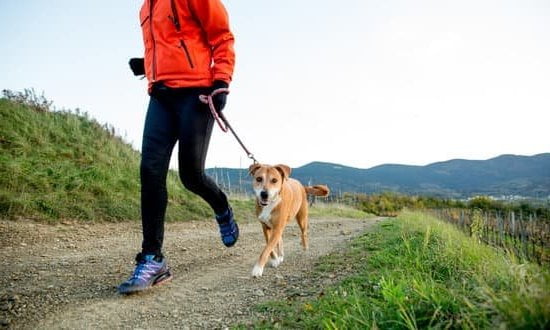Training a dog that can’t hear presents unique challenges that require special techniques and approaches. Without the ability to hear verbal commands, traditional training methods may not be effective. In this article, we will explore the different strategies and tools that can be used to successfully train a deaf dog.
From utilizing visual cues and body language to establishing trust and communication, we will delve into the key aspects of training a deaf dog. Additionally, we will address common misconceptions and provide troubleshooting tips to overcome challenges that may arise along the way. Whether you are a first-time owner of a deaf dog or looking to expand your knowledge on training techniques, this article will provide valuable insights for helping your furry friend thrive in a hearing world.
The Importance of Visual Cues
One of the most crucial aspects of training a deaf dog is the use of visual cues. Since they cannot hear verbal commands, it is essential to rely on hand signals and body language to convey your instructions effectively. Visual cues are not only a means of communication but also help to establish a strong bond between you and your deaf dog.
Using hand signals allows you to communicate with your dog from a distance, which can be extremely useful in various situations. For example, if you want your dog to sit, you can raise your hand palm up towards their nose.
Similarly, if you want them to lie down, you can lower your hand palm down towards the ground. It’s important to be consistent with your gestures and use them in conjunction with verbal commands for reinforcement (even though your dog cannot hear the command itself).
In addition to hand signals, body language plays a significant role in training a deaf dog. Dogs are experts at reading human body language and facial expressions, so utilize this innate ability when communicating with them. Make sure that your body language is clear and consistent so that your dog can understand what behavior is required of them.
To aid in understanding visual cues, consider incorporating treats or rewards into the training process. This positive reinforcement will reinforce their understanding of the desired behavior associated with specific visual cues. Patience is key during this process as it may take time for your dog to learn and respond promptly to visual cues.
| Hand Signals | Description |
|---|---|
| Palm Up | Signal for “Sit” |
| Palm Down Toward Ground | Signal for “Lie Down” |
| Horizontal Hand Wave | Signal for “Come” |
| Pointing Finger | Signal for “Stay” |
Building a Strong Bond
Building a strong bond with a deaf dog is crucial for effective training and communication. Due to their inability to hear verbal commands, establishing trust and understanding through visual cues becomes even more important. Here are some strategies to help you build that bond and develop a solid line of communication with your deaf dog.
Firstly, it’s essential to use positive reinforcement techniques when training a deaf dog. Reward-based training methods like treats or toys can help establish trust and strengthen the bond between you and your dog. This type of training encourages good behavior rather than punishing negative behavior, which is especially important for a dog that relies heavily on visual cues.
Additionally, incorporating hand signals and body language into your training routine is key. Dogs are highly observant animals, so using clear and consistent hand signals paired with specific commands can help your deaf dog understand what you want them to do.
For example, you can raise your hand palm up as a signal for “sit,” or extend both arms outwards as a signal for “stay.” Consistency is vital so that your dog can readily associate each hand signal with its corresponding command.
Apart from hand signals, utilizing facial expressions and body language can further enhance communication with your deaf dog. Dogs are experts at reading human emotions, so emphasizing certain facial expressions or body postures while giving commands can add clarity to your messages. For instance, leaning slightly forward with an encouraging smile on your face while gesturing the sit command can help convey positive reinforcement.
By focusing on positive reinforcement techniques, incorporating clear hand signals and body language, and maintaining consistency in your interactions, you will be well on your way to building a strong bond with your deaf dog. This foundation of trust and communication will not only aid in training but also create a loving relationship built on mutual understanding.
| Training Strategy | Description |
|---|---|
| Positive Reinforcement | Reward-based training methods using treats or toys to encourage good behavior. |
| Hand Signals | Clear and consistent hand gestures paired with specific commands for effective communication. |
| Body Language | Utilizing facial expressions and body postures to enhance communication and convey emotions. |
Effective Tools and Techniques
Dealing with a deaf dog comes with its unique challenges, but there are effective tools and techniques that can make training easier. As dogs rely heavily on their sense of hearing for communication, it’s crucial to find alternative methods to communicate with them. One of the most effective tools for training a deaf dog is utilizing vibrations and flashing lights.
Vibrations can be used as a way to get your dog’s attention and convey commands. You can use a vibrating collar or create vibration signals using household objects. For example, you can stomp your foot on the ground or tap on a surface near your dog to create vibrations. It’s important to pair the vibration with a visual cue so that your dog understands what behavior is expected from them.
Flashing lights are another useful tool for training a deaf dog. You can use a flashlight or small LED lights to catch your dog’s attention and give commands. For instance, you can flash the light in their line of vision before giving a hand signal or pointing towards the desired behavior. This helps your deaf dog understand what you want them to do.
When training with vibrations and flashing lights, consistency is key. Use the same signals repeatedly so that your dog associates them with specific behaviors or commands. Positive reinforcement techniques such as treats, praise, and affection are also essential in reinforcing good behavior and building trust between you and your dog.
Utilizing vibrations and flashing lights during training not only helps you communicate effectively with your deaf dog but also gives them the opportunity to understand and follow commands just like any other trained canine companion. With patience, consistency, and positive reinforcement, these tools can make training sessions more successful and enjoyable for both you and your deaf pup.
Teaching Basic Commands
One of the key aspects of training a deaf dog is teaching them basic commands. While traditional training methods may need to be modified, it is still possible to effectively communicate with and train a dog that can’t hear.
One important modification is to incorporate visual cues instead of relying solely on verbal commands. Deaf dogs are highly observant and rely heavily on visual information, so utilizing hand signals and body language becomes crucial in their training.
For example, you can teach your dog to sit by raising your hand above their head and then bringing it downward, mimicking the motion of sitting. Consistency is key when using visual cues, as the dog needs to associate specific gestures with corresponding actions.
Positive reinforcement also plays a key role in training deaf dogs. Rewarding good behavior with treats, toys, or praise helps reinforce the desired commands and behaviors.
You can begin by associating the reward with the hand signal or body language used for each command, gradually fading out the reward as the dog becomes more proficient. It’s important to note that punishment or harsh corrections should not be used when working with a deaf dog, as this can lead to fear or mistrust.
Another technique that can be useful in training deaf dogs is utilizing vibrations and flashing lights. Vibration collars can be used as a tactile cue for certain commands, such as recalling your dog or getting their attention. Similarly, incorporating a visual cue like a flashing light can act as an attention-grabber for your dog and signal them to pay attention to you.
By modifying traditional training methods and incorporating visual cues, positive reinforcement, vibrations, and flashing lights, you can effectively teach basic commands to a deaf dog. This approach allows for effective communication and strengthens the bond between you and your furry friend. With patience, consistency, and creativity, you’ll find that training a deaf dog is not only possible but also rewarding for both of you.
Potty Training
Of all the challenges that come with training a deaf dog, potty training can often be one of the most difficult. Without being able to hear commands or verbal cues, it can be challenging for a deaf dog to understand where they are supposed to go potty. However, with some patience and the right approach, it is definitely possible to successfully potty train a deaf dog.
Utilize Visual Cues
When it comes to potty training a deaf dog, visual cues are crucial. Establish clear hand signals or body language that you will use consistently when you want your dog to go potty. For example, you could use an open palm facing down as a signal for your dog to relieve themselves outside. It is important to always use the same cue so that your dog learns to associate it with going potty.
Additionally, consider using visual markers in your yard or designated bathroom area. Place flags or markers in specific spots where you want your dog to eliminate. This will help create a visual association for them and make it easier for them to understand where they should go.
Create a Consistent Routine
Consistency is key when potty training any dog, but even more so for a deaf one. Establishing a consistent routine will help your deaf dog develop good bathroom habits. Take your dog outside frequently throughout the day, especially after meals and naps, and always use your visual cue when it’s time for them to go potty.
Having a predictable schedule will also help prevent accidents in the house. If your dog knows when they can expect bathroom breaks, they are less likely to have accidents indoors.
Positive Reinforcement
Just like with any other type of training, positive reinforcement is essential when potty training a deaf dog. Use treats and praise when your dog successfully goes potty in the desired spot. This will reinforce their understanding and motivate them to continue their good behavior.
SUMMARY:
Potty training a deaf dog may require some extra effort and patience, but with the right approach, it is definitely achievable. Utilize visual cues and markers to help your dog understand where they should go potty. Establishing a consistent routine will also aid in developing good bathroom habits.
And, as with any type of training, positive reinforcement is key in motivating your deaf dog to continue their progress. With time and persistence, you can successfully navigate the obstacles of potty training in a silent environment.
Troubleshooting
Dealing with a deaf dog may present some unique challenges, but with the right approach and understanding, these challenges can be overcome. This section will address some common issues that arise when training a deaf dog and provide solutions to help address them.
One of the most common misconceptions about training a deaf dog is that they cannot learn or respond to cues like their hearing counterparts. While it is true that they cannot hear verbal commands, deaf dogs are extremely perceptive to visual cues.
Therefore, it is important to utilize hand signals and body language as the primary means of communication during training sessions. By using consistent and clear visual cues, such as raising your hand for a sit command or pointing in a specific direction for a recall, you can effectively communicate with your deaf dog.
Another challenge often faced when training a deaf dog is ensuring that they stay engaged and focused during training sessions. To combat this, it can be helpful to incorporate high-value treats or rewards to motivate your dog. Deaf dogs rely heavily on their other senses, particularly their sense of smell. Using treats with strong aromas or toys that emit scent can grab their attention and keep them engaged in the training process.
In addition to visual cues and treats, another effective tool for training a deaf dog is utilizing vibrations or flashing lights. A vibrating collar can be used as a cue for various commands like recall or stop. Similarly, using a flashing light as a signal allows your dog to associate the visual cue with a specific command or action. These tools are valuable in providing clear and distinct signals that your deaf dog can easily comprehend.
Safety First
Deaf dogs face unique challenges when it comes to ensuring their safety. Without the ability to hear, they rely heavily on visual cues and their other senses to navigate their environment. As a dog owner, it’s important to take extra precautions to keep your deaf pup out of harm’s way. This section will provide strategies for ensuring the safety of your deaf dog.
Creating a Safe Environment
One of the first steps in keeping a deaf dog safe is creating a secure and structured living environment. Start by puppy-proofing your home, removing any potentially harmful objects or substances that your dog could ingest or get injured by. Deaf dogs are curious just like any other dog, so you’ll want to be mindful of hazards such as toxic plants, electrical cords, and household chemicals.
It is also crucial to ensure that your property has secure fencing or barriers to prevent your dog from wandering off. Always supervise your deaf dog when they are outside, especially in open areas where they may not hear approaching vehicles or dangers. Consider using visual markers or flags along the boundaries of your property as an added precaution.
Leash Training and Harnesses
When taking your deaf dog for walks or outings, leash training becomes even more essential for their safety. A sturdy leash and harness are crucial tools for keeping them close by and under control in unfamiliar environments. Using a harness instead of a collar can help prevent injuries from pulling on the neck area and give you better control over your dog’s movements.
Additionally, consider using a reflective leash and harness or attaching blinking lights to their collar during nighttime walks. These visual aids can make your deaf pup more visible to motorists and pedestrians, reducing the risk of accidents.
Avoiding Startling Situations
Without auditory awareness, sudden noises can startle a deaf dog easily. To prevent unnecessary stress or fear reactions, avoid placing your deaf dog in situations that could startle them. When introducing new experiences or environments, do so gradually and with careful supervision. This will help your dog adjust and feel more comfortable.
It’s important to remember that deaf dogs may startle if approached from behind, as they cannot hear footsteps or voices. Always approach your deaf dog from the front and make sure they see you coming. This not only helps prevent startling but also establishes trust and respect between you and your pup.
By implementing these safety strategies, you can provide a secure environment for your deaf dog and minimize potential risks. Being proactive in ensuring their safety will allow them to thrive and enjoy a happy life alongside their human companions.
Socialization
Deaf dogs, like their hearing counterparts, need socialization to help them navigate the world around them. However, socializing a deaf dog presents some unique challenges. In this section, we will explore strategies for helping your deaf pup thrive in a hearing world.
The Importance of Controlled Environments
When socializing a deaf dog, it’s important to start in controlled environments where you can manage the level of stimuli. Begin with quiet and calm settings where your dog can become comfortable with new people, animals, and experiences gradually. Gradually introduce them to different environments such as parks, cafes, or pet-friendly stores once they have gained confidence in quieter surroundings.
Positive Reinforcement and Training
Utilize positive reinforcement techniques during socialization to reinforce positive behaviors and build trust with your dog. Reward your deaf pup whenever they approach new people or situations calmly and confidently. It’s also helpful to teach some basic cues like a “watch me” command using hand signals so that you can redirect their attention towards you when needed during socialization.
Socializing with Other Dogs
When introducing your deaf pup to other dogs, choose friendly and well-behaved ones who are comfortable around other animals. Use visual cues such as hand signals or vibrations to communicate between the dogs if they cannot hear each other. Monitor their interactions closely and ensure that both dogs are comfortable before allowing off-leash play.
Working with Professionals
If you find that socializing your deaf dog is challenging or overwhelming, consider seeking guidance from professionals experienced in training deaf dogs. They can provide valuable advice and techniques for navigating specific obstacles your dog may face during socialization.
Remember that every dog is unique and may require varying degrees of time and effort to become confident in different situations. Be patient, consistent, and understanding with your deaf pup as you work together to help them thrive in a hearing world.
Extra Support
As a dog owner, training a deaf dog can present unique challenges. However, with the right resources and support, you can successfully navigate these obstacles and create a happy and well-trained pup. In this final section, we will explore the extra support available for training deaf dogs.
One valuable resource is the availability of training classes specifically designed for deaf dogs. These classes are often taught by professionals who specialize in working with dogs that have hearing impairments. They understand the unique needs and challenges of training a deaf dog and can provide guidance and support tailored to your furry friend. Additionally, these classes provide an opportunity for your dog to socialize with other deaf dogs, allowing them to build confidence and create lasting bonds.
Another option is seeking the assistance of a professional dog trainer who has experience working with deaf dogs. These trainers can offer valuable insights into effective training methods and help address specific challenges you may encounter while training your pet. They can work with you to develop a personalized training plan that takes into account your dog’s individual needs and abilities.
In conclusion, while training a deaf dog may require extra effort and patience, there are numerous resources available to help you along the way. Whether it be specialized classes or professional trainers, taking advantage of these opportunities will provide you with the tools and knowledge needed to successfully train your deaf dog.
Through consistent communication using visual cues, building trust through positive reinforcement, and providing socialization opportunities, you can help your pup thrive in their hearing world while strengthening the bond between you both.
Frequently Asked Questions
Can deaf dogs be trained?
Yes, deaf dogs can absolutely be trained. While their inability to hear may present some challenges, they are highly adaptable and can learn through other means such as visual cues and hand signals.
Training methods that rely heavily on positive reinforcement and consistency are particularly effective for deaf dogs. By using rewards like treats or praise, and teaching them commands with clear gestures or signs, deaf dogs can learn a wide range of skills and behaviors just like their hearing counterparts.
How do you get a deaf dog to hear?
Since deaf dogs cannot hear, it is not possible to make them physically hear sounds. However, communication with a deaf dog can be established through alternative methods. One effective approach is to use visual cues and hand signals instead of vocal commands.
For example, teaching a dog the sign for “sit” by consistently pairing the gesture with the action helps the dog understand what is expected of them. Additionally, techniques such as stomp or vibration training can give a deaf dog important feedback when they are doing something correctly or need to pay attention.
How do you train a hyper deaf dog?
Training a hyper deaf dog requires patience, consistency, and understanding of their unique needs. It can be helpful to break down training sessions into shorter sessions throughout the day since hyperactive dogs may struggle to focus for extended periods. Engaging their mental and physical energy through activities like puzzle toys, interactive play sessions, or obedience exercises before training can help calm them down and improve focus during training sessions.
Using positive reinforcement techniques such as treats or praise when they exhibit desired behaviors will also encourage them to stay engaged in the training process. Consistency in expectations and repetition in training exercises will gradually help a hyper deaf dog become more well-behaved over time.

Welcome to the blog! I am a professional dog trainer and have been working with dogs for many years. In this blog, I will be discussing various topics related to dog training, including tips, tricks, and advice. I hope you find this information helpful and informative. Thanks for reading!





